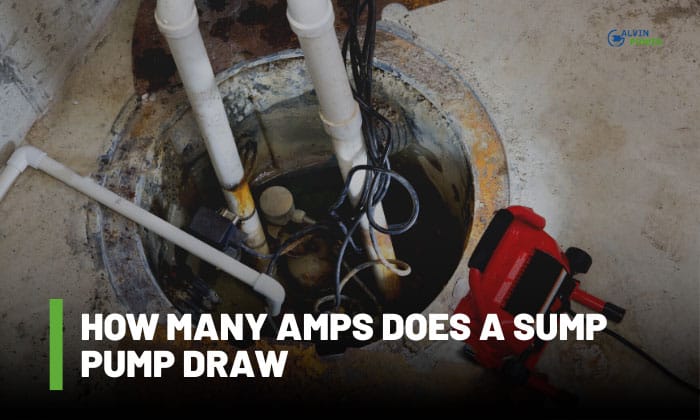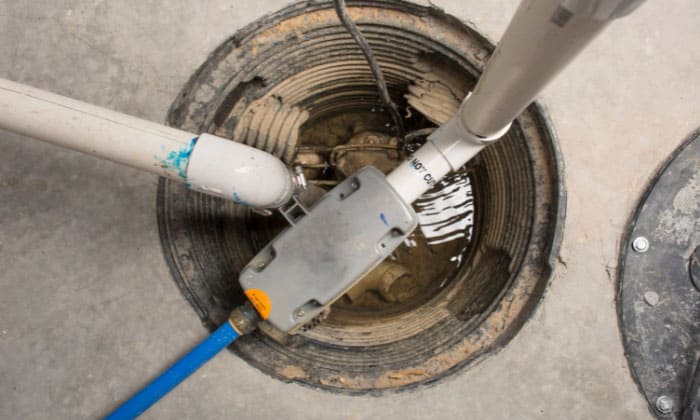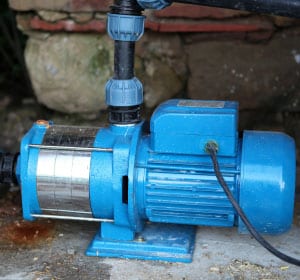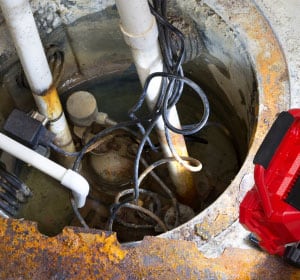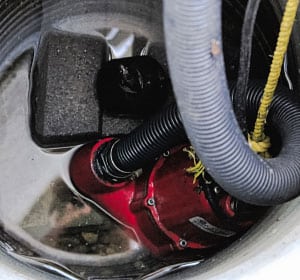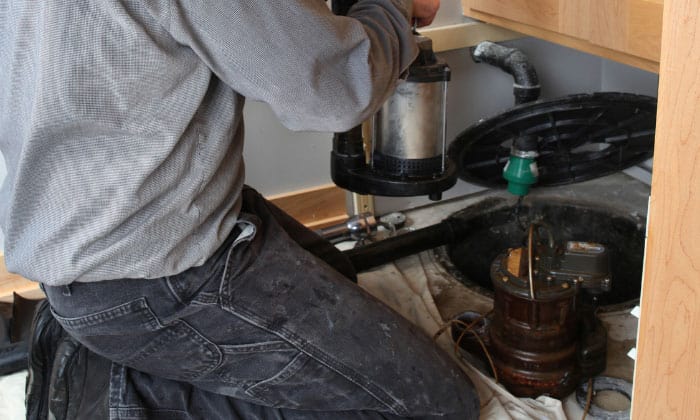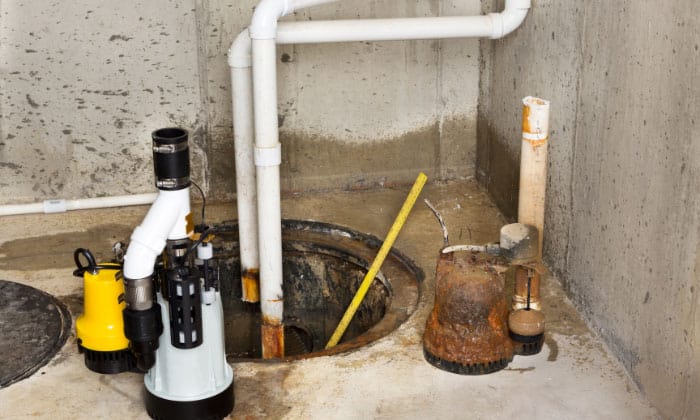A sump pump is crucial for preventing floods and water damage in a home. Therefore, it would be best to ensure that it receives an adequate power supply to keep it running efficiently.
In this article, we will discuss how many amps does a sump pump draw and other factors affecting its amps so that you may determine the optimal circuit for it. Furthermore, it will assist you with choosing a suitable generator in the event of a power outage.
Table of Contents
How Much Electricity Does Sump Pump Draw?
Typically, a sump pump’s amp draw mainly depends on how many watts and voltage supply. For most residential households, it can operate in a 230 volts power supply and draw between 3 and 10 amps of current.
To have an idea of sump pump amps, check out this chart containing the average amp rating of various power inputs.
| Sump Pump Power Rating | Actual Running Wattage | Voltage Rating | Average Amp Rating |
| ¼ hp | 500-600 watts | 230v | 3.5 – 3.8 amps |
| 1/3 hp | 800 watts | 230v | 5 amps |
| ½ hp | 1000-1050 watts | 230v | 6 amps |
| ¾ hp | 1500 watts | 230v | 8 amps |
| 1 hp | 2000 watts | 230v | 10 amps |
The Importance of Understanding Sump Pump Amperage
Understanding the pump amps is crucial because it helps you to determine whether its circuit can handle its electrical load. This could be helpful, especially during a power outage where you might use a generator for sump pump backup power.
At the same time, electrical systems are designed to handle specific loads, and exceeding this load can lead to circuit overload, which can cause circuit breakers to trip or electrical fires. Therefore, knowing the pump amps can help you to prevent electrical problems and ensure that your sump pump operates safely and efficiently.
Factors Affecting Sump Pump Amp Rating
1. Size and Type of Pump
Generally, larger and more powerful pumps usually have larger basins and will draw more amps than smaller ones. For instance, a 1-horsepower sump pump will draw more amps than a 0.5-hp sump pump.
2. Voltage and Electrical Phases
Having an unstable power supply will make the sump pump may draw more amps than required, leading to high energy power usage. At the same time, using a sump pump in the three-phase circuit may result in fewer amps.
3. Pump Age and Condition
The age and condition of the sump pump can also impact its amp rating. Over time, wear and tear on the pump can cause it to draw more amps than usual.
4. Motor Efficiency
A more efficient motor will draw fewer amps while operating at the same level of performance. Therefore, choosing a sump pump with a high-efficiency motor is essential to reduce energy usage and costs.
How to Determine the Sump Pump Amp Rating
You can determine the sump pump amp rating by checking its label or calculation based on its power input. The label on your sump pump should indicate its horsepower and amp draw. If the label is missing or unreadable, you can calculate the average amp by using the following formula:
\[\text{Amps} = \frac{\text{Power (Watts)}}{\text{Power factor} \times \text{Volts}}\]
For example, if your sump pump is rated at 1 horsepower with operating 2000 watts and operates at 230 or 240v and a power factor of 80 %, it would be 10.8 amps.
However, the sump pump’s starting watts vs running watts are totally different. Its starting wattage is typically 1.5 to 2 times higher than its running wattage. As a result, a circuit with a power rating of 15 or 20 amps is necessary for a 1-horsepower sump pump.
What to Do if Your Sump Pump is Drawing Too Many Amps
There can be various reasons why your sump pump is drawing too many amps, including electrical issues, clogging, current imbalance, or an undersized pump. Consistent high amp draw can lead to overload, tripping breaker, or pump damage.
Therefore, it is crucial to diagnose the problem to identify the root cause of the high amp draw. You should check the power supply and wiring of the pump to ensure it’s in good condition. However, if you lack expertise in troubleshooting electrical problems, it’s advisable to seek professional help.
Common Reasons for Sump Pump Failure
1. Overloading
Sump pumps are designed to handle a specific amount of water; if they exceed this limit, they may fail or overload the circuit. To prevent pump overload, ensure your pump is the appropriate size for your home’s needs, and consider checking the cause of overload.
2. Electrical Problem
Sump pump failure can also be caused by electrical issues such as short circuits and ground faults. This is mostly due to pests damaging the wiring, which causes these problems. In this case, contacting a certified electrician is helpful in both verifying and repairing the electrical damage.
3. Clogged
The discharge line that carries water can get clogged or frozen, causing the pump to work harder than necessary before failing. To avoid this, inspect and clear the discharge line of debris, dirt, and ice regularly.
Energy Usage and Cost Implications
The pump amp rating directly affects its energy usage. Sump pumps with high currents generate more electricity, which might dramatically increase your monthly electric cost. As a result, here are some recommendations to assist you in lowering its energy consumption.
- A sump pump will continue working when water is on its basin. You can save energy and extend the pump’s life by installing a switch system limiting its running time.
- Another cause of high-power usage of a sump pump is by having a leak and clogs. In this case, regularly maintaining your sump pump can also be helpful in reducing its power usage.
- A sump pump that is too large for your needs will consume more energy than necessary. Make sure to properly size your sump pump based on the size of your basement and the amount of water that needs to be pumped.
Frequently Asked Questions
Can I Use an Extension Cord with a Sump Pump?
Using an extension cord with a sump pump is not recommended since it might cause electrical problems and other safety hazards. Sump pumps typically have a high-power draw, which must be plugged into a dedicated wall socket.
How Often Should I Replace My Sump Pump?
Over time, a well pump can experience wear and tear and become less effective in preventing basement flooding. It has an average lifespan of 5 to 7 years, depending on usage and condition.
How Do I Choose an Energy-efficient Sump Pump?
Wondering what horsepower sump pump do I need to have an energy-efficient sump pump? You may consider .5 hp or less as it is usually the most energy-efficient unit. However, you need to ensure that this power rating is enough to remove the flood in your home.
What Is the Size of the Generator Should I Need?
The size generator to run sump pump will be determined by its power rating, particularly its model. It is crucial that your generator can handle the load of your sump pump, particularly during startup when it consumes a substantial amount of power.
Conclusion
Finally, knowing how many amps does a sump pump draw can assist you in determining the proper circuit to keep it running efficiently and cost-effectively. This may be more useful during times of flooding and storms, when a generator may be used as a backup power supply.
Always remember that a proper evaluation should be made if your sump pumps fail. In this case, contacting a professional to repair the problem or evaluate whether your unit has to be replaced is the ideal solution.
Read more: Amp usage of a dehumidifier, an air conditioner and etc.

I am Edwin Jones, in charge of designing content for Galvinpower. I aspire to use my experiences in marketing to create reliable and necessary information to help our readers. It has been fun to work with Andrew and apply his incredible knowledge to our content.

